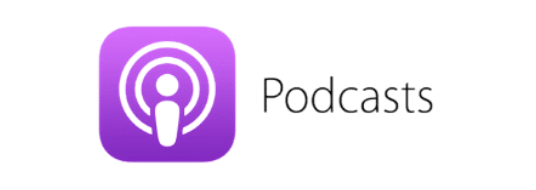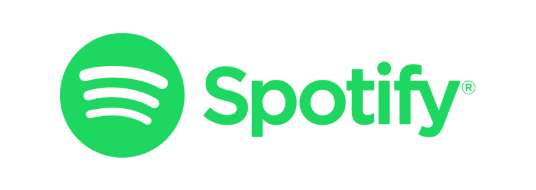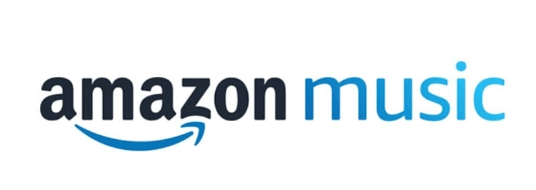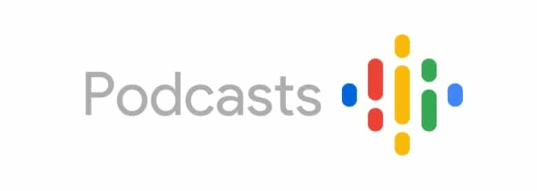Stacy is dedicated to helping companies and their HR teams build better professional training as part of her role as head of marketing at Vyond, a video animation software company that supports businesses in easily creating corporate videos.
She is passionate about the power of video storytelling and believes in its unique ability to bolster corporate learning and address workplace issues.
What You’ll Hear
- [1:15] About Stacy and her background
- [1:48]: The impact of the pandemic on Vyond
- [4:06] Vyond’s findings from their employee survey
- [9:22] How office life will change in the next 12 months
- [13:21] Changes in how women present themselves
- [14:40] The death of the 9-5
- [19:23] The reasons for Vyond’s success
- [21:05] First steps to creating an animated video
- [23:14] Stacy’s other video tips
- [25:14] Animated vs live video
- [28:28] The technical skills required to use Vyond
- [30:59] The most interesting place Stacy has been
Proudly Sponsored By:
About Stacy and Her Background
Stacy has been in marketing for most of her career; the majority of the time she’s worked for technology companies such as mobile and telephone technology. She’s been at Vyond for the last five years. Originally founded as GoAnimate 14 years ago, the business helps
The Impact of the Pandemic on Vyond
Stacy says that a lot of people are looking for alternative methods of communication outside of conference and video calls, even in the training and e-learning sectors. They need to reach their employees in lots of different ways because there’s no face-to-face communication.
Vyond’s Findings from Their Employee Survey
This is the third time Vyond have surveyed employees, so it’s been interesting to compare results before and after the lockdown. Stacy says they ask questions around work/life balance, employee communication and mental health needs.
They’ve found that during and after the pandemic, employees are reporting a better work/life balance. They’ve worked out challenges around things like childcare, working with their patterns or roommates at home but their work/life balance has improved.
Stacy says that what’s more interesting is that while everyone is reporting a better balance, women aren’t seeing quite as much of an improvement. Women take on more childcare responsibilities and so on.
Remote workers are reporting that their employers are getting better with communication and transparency, which is interesting. Stacy says it would be fair to assume that face to face meetings in offices meant better communications, but that’s not the case. Leaders are seeing that they need to communicate more often with remote workers, and in a way that works for them.
Stacy adds that there is resistance to going back to the office in the US, and that has also been an interesting shift. At the beginning of the pandemic, people tried to cling to the norms of the workplace and family life.
They wanted everything to be perfect and worried about their kids not getting a good education or being able to attend meetings. Over time, though, people have figured it all out, and it’s created a flexible working and living environment that has benefited so many people.
People have become used to their own four walls and are a little nervous about leaving them and interacting with people again. But, a lot of the resistance is due to people realising how good it is to have that flexibility and they want to keep that for as long as possible.
How Office Life Will Change in the Next 12 Months
Stacy says that the last year or so has led to people having a lot more empathy for each other, especially as they’ve been virtually let into their homes. When they did the previous survey, people reported being bothered by things like kids or pets video bombing, or inappropriate Zoom backgrounds.
In the latest round of results, none of those things are as important. There’s been a change in what people consider as a workplace violation, because we’re sharing so much of ourselves with each other.
People are giving each other a break, because things are bad enough out in the rest of the world so it’s not as important that someone is trying to work from home with kids as it was in the beginning.
Employers have invested a lot of money in employee mental health. They’re using tools like Vyond to create more content around how to keep yourself healthy when working from home.
Stacy says, “We’ve created a whole series of template videos for our clients on topics ranging from ‘how to set up an ergonomic home office’ to ‘how to seek help from your employer if you need mental health support’, and any resources that are available.
“That empathy, combined with going the extra mile in providing resources has made a huge difference, and I believe that this will continue, especially now that companies are having to speak to employees about what this new workplace will look like.”
It might be that staff are going to continue to work remotely forever, or they’re moving into a hybrid model – the most likely – where they spend some time at home and some time in the office. Or, the employer may be demanding that they return full time to work.
Those types of changes in people’s lives are disruptive, no matter what they are. If people are going to work from home for the long term, but some of their colleagues are going back, with some at the office 100% of the time, it’s still a change. The remote workers may feel left out, so the empathy needs to continue.
You don’t have to worry about being ‘on’ or dressed up. It circles back to what’s important and how we’re taking care of ourselves. That type of self-care isn’t important right now. It’s interesting to see how this will change when people return to work.
Changes in how Women Present Themselves
Many women no longer feel the need to put makeup on and dress ‘professionally’ for Zoom meetings. Stacy adds that wearing a face mask also means anonymity, which can be freeing when you go out to the store or for a walk.
You don’t have to worry about being ‘on’ or dressed up. It circles back to what’s important and how we’re taking care of ourselves. That type of self-care isn’t important right now. It’s interesting to see how this will change when people return to work.
The Death of the 9-5
There is a whole new set of cultural norms that have developed in the past year, and what was considered appropriate or inappropriate at work a year ago has changed almost completely. Stacy has found several interesting examples from the employee survey.
The first shift is that we found that while having romantic relationships with people in the office was seen as a workplace violation by 52% of employees in February 2020, now only 20% consider it to be one.
Stacy says it goes back to the ‘you’ve got to do what you’ve got to do’ and people being concerned about themselves. They’re happy to let their co-workers get on with things as everyone is just trying to get by.
She adds, “Remote work’s tendency to break down the barrier between work and personal lives is likely impacting this shift. Remote work also leads to people communicating with each other and developing these relationships.
You’d think that because we’re all separated from each other that these types of things wouldn’t happen, but they are. It’s funny that people are still finding each other and developing romantic relationships when they can’t physically get together.
“Remote work’s tendency to break down the barrier between work and personal lives is likely impacting this shift.”
Stacy Adams
We also found that in the last year, perceptions have also changed around talking about politics and religion at work, with the number of employees who consider discussing politics a workplace violation decreasing by 23% and religion decreasing by 17%.”
This may reflect on the fact that during an election year filled with polarisation, especially in the US over the last two years, plus the pandemic, employees want to connect with each other on issues that are personally important to them.
Again, people want to know more about their colleagues, and politics and religion are ways that we can be connected. Stacy says, “We’re a lot better now at allowing people to be who they are, especially when it comes to the workplace.
“It will be interesting to see how these figures change when we run the survey in a year’s time. People will be back at work, at least part-time, and face to face meetings happen – will they close up again?”
The Reasons for Vyond’s Success
Over the last 14 years, Vyond has worked with over 12 million users, and the last year has seen increased demand. Stacy says that they’re riding the tail of people who want to communicate in a better way.
In many roles, people have needed better ways to communicate, and with video you’re able to connect the dots better than you can with PowerPoint or text-based PDFs. People are looking for movement and more dynamic communication, but also for something that’s easy to use, and Vyond delivers all of those.
First Steps to Creating an Animated Video
As with any other campaign, start out with your brief. Who are you talking to and is video the right way to get them to take notice or do what you want them to do? If that’s the case, then you go about it like any other video.
You need to script and storyboard your video and get all your concepts, characters and story in place. And this applies if it’s a short GIF or a 30-second video. If you do this before you start creating it, it makes the whole process a lot easier.
Length varies depending on the purpose of the video and where it’s going to be shared. On social media, you don’t want more than 30 seconds of video, explains Stacy.
If you’re looking at using video for training, then it can be up to five minutes long, but from a marketing perspective, Vyond recommend no more than two minutes. That kind of video would be an explainer of some kind.
Stacy’s Other Video Tips
It’s really easy to say to yourself, ‘I want to create a video, so I’ll just sit down and open this programme’ without having a plan, a script or a storyboard to guide you. If you do this, you get stuck, because you start to put your ideas together and it’s too long.
Planning is important so that your call to action doesn’t get lost. Then, don’t think of an animated video like Vyond as something different to a live video. There are things you need to include to add layers of interest.
For example, you need to consider sound effects and the music you’ll use. A lot of people aren’t aware that you can do this with Vyond. Similarly, you can add voice-overs and give any characters on screen a voice.
It’s important to do recording in a quiet room, because any sound that shouldn’t be part of the video can really detract from the overall experience. Even static in the background means the audience focuses on that rather than what you’re actually saying.
Animated vs Live Video
Stacy says that it depends on the channel. When you look at what you’re trying to communicate, there are times when live video is better. For instance, if you have a dynamic subject matter expert who’s a really great communicator, then filming them live can be more compelling.
However, Vyond isn’t just an animation platform, so you can record someone as a live video, import the MP4 into Vyond and animate around it. You can highlight key talking points, add images and more.
In areas where you can’t be live or need something that’s easy to edit or change – such as marketing videos using statistics – an animated video is better. It’s also considerably cheaper to use a software tool like Vyond to make a couple of quick tweaks, rather than having to film the whole video again each time something changes.
And depending on the topic, which could be uncomfortable or embarrassing viewing, it’s often easier to watch an animated character go through things instead of a real human being. It takes away the personal attachment and lets people complete the training and consume the information they need.
The Technical Skills Required to use Vyond
Stacy says if you’ve ever created something on PowerPoint, you can use Vyond. Like anything, it takes a little while to figure it out, but it’s not difficult. It’s set up so that even if you’re just doing the basics, it’s quick and straightforward.
They also provide really comprehensive learning centres, with videos, teaching tips and more. There is a series of completed video templates which you can search, add to your account and customise accordingly.
They let users get videos out quickly, but also because they can see how the Vyond team put them together. The templates can be deconstructed so users can learn how it was done and reverse engineer it.
The Most Interesting Place Stacy has Been
Working in marketing and tech has provided Stacy with the opportunity to travel all over the word, to places like Singapore, Hong Kong and Taiwan to all over Europe. She and her husband lived in Melbourne, Australia for two years, and loved it, particularly the cake shops in the suburb of St Kilda.
From there, they visited New Zealand and cruised the fjord lands, which was breath-taking. They also went to Hobart in Tasmania, which was wonderful. They took a ferry to Bruny Island and rented a car and did wine and cheese tasting, went to secluded beaches and drove around taking in the scenery. Australians are friendly and accommodating to visitors, too. All of the template videos and the survey findings can be found on the Vyond website, along with the resources library. They have tips and tricks on storyboarding, scriptwriting and how to make your first video. Connect with Stacy by searching for ‘Stacy Adams Vyond’ on LinkedIn.















